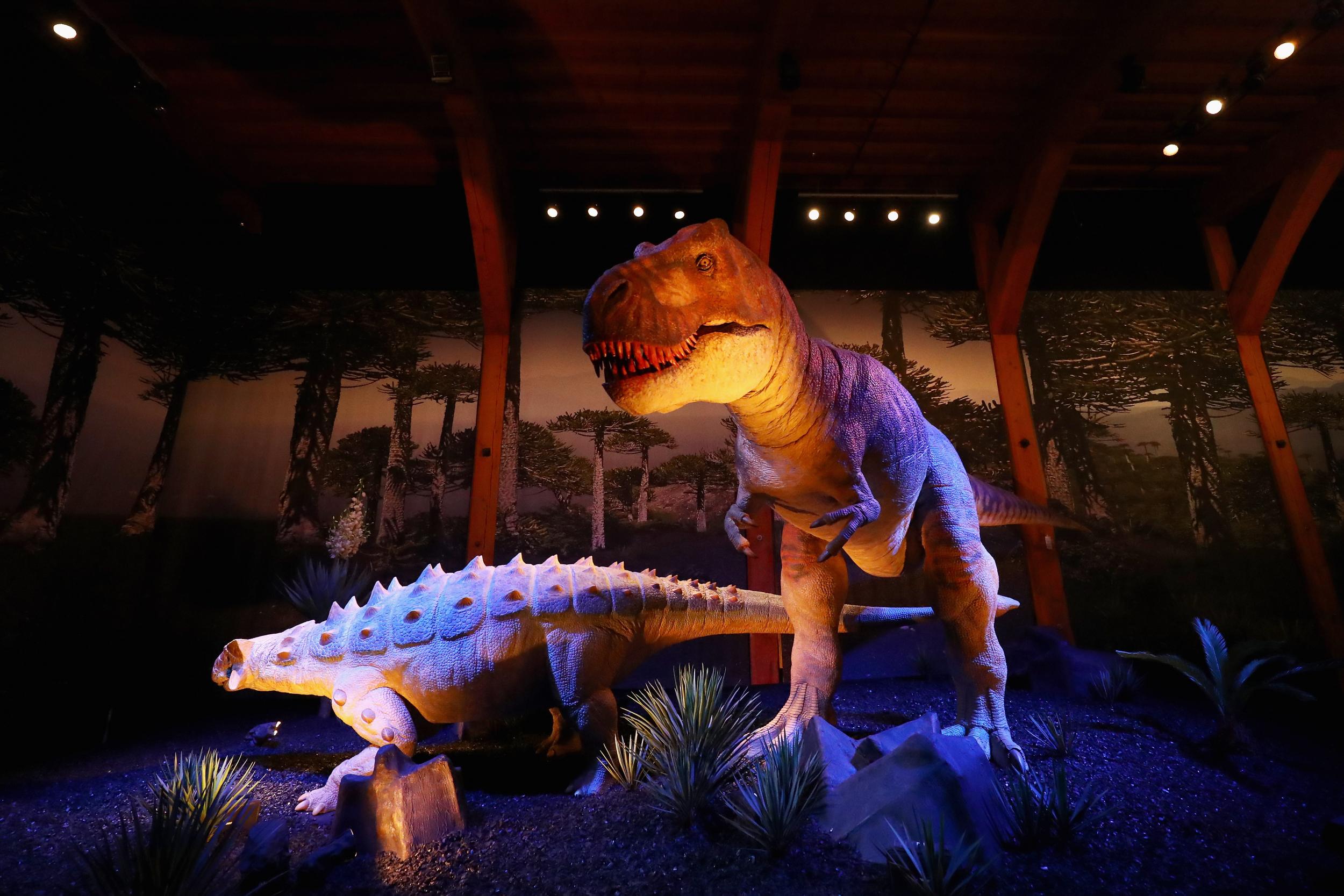Tyrannosaurus rex were sensitive lovers, new dinosaur discovery suggests
‘Tyrannosaurids might have rubbed their sensitive faces together as a vital part of precopulatory play,’ say scientists

The Tyrannosaurus rex may have been the most fearsome creature ever to walk the Earth, but he was also a sensitive lover, a new dinosaur discovery suggests.
The terrifying meat eater, which stood 20 feet tall and had jaws bristling with serrated teeth up to nine inches long, had a snout as sensitive to touch as human fingertips, say scientists.
The T rex and other “tyrannosaurs” would have used their tactile noses to investigate their surroundings, build nests, and carefully pick up fragile eggs and baby offspring.
But another possibility is that males and females enjoyed rubbing their sensitive faces together while mating, experts believe.
The US researchers wrote in the journal Scientific Reports: “In courtship, tyrannosaurids might have rubbed their sensitive faces together as a vital part of precopulatory play.”
The findings follow the discovery of a new member of the tyrannosaur family called Daspletosaurus horneri (Horner’s frightful lizard) in Montana, US.
The D horneri lived before the T rex, around 74 million years ago, and was three quarters the size of its later cousin, with a body length of 9m.
Unusually well-preserved fossil skulls and skeletons of several of the creatures were found, including adults and juveniles.
It was the “face” of D horneri that yielded the most important information, opening a new window on tyrannosaur evolution and anatomy.
Scientists believe the dinosaur and other tyrannosaurs including T rex had a mask of large, flat scales, with regions of tough and protective amour-like skin around the snout and jaws.
Strikingly, the hard surface of the snout was penetrated by numerous small nerve openings, or “foramina”.
These would have allowed hundreds of branches of the trigeminal nerve to access the surface of the snout, turning the dinosaur’s whole face into a super-sensitive third “hand”.
A similar arrangement is seen today in crocodiles and alligators, which have thousands of tiny sensitive bumps called integumentary sensory organs around their jaws.
Lead scientist Dr Thomas Carr, from Carthage College in Wisconsin, said: “Given that the foramina are identical in tyrannosaurs indicates that they had super-sensitive skin as well.”
The trigeminal nerve plays a special sensory role in many mammals, reptiles and birds, carrying sensory signals from whiskers and electrical receptors and enabling the pit viper to home in on infrared radiation from warm-blooded prey.
Crocodiles sense both touch and vibrations in water via the trigeminal nerve, and migrating birds use it to detect magnetic fields.
Co-author Professor Jayc Sedlmayr, from Louisiana State University, said: “Our finding of a complex sensory web is especially interesting because it is derived from the trigeminal nerve which has an extraordinary evolutionary history of developing into wildly different ‘sixth senses’ in different vertebrates.”
PA
Join our commenting forum
Join thought-provoking conversations, follow other Independent readers and see their replies
Comments